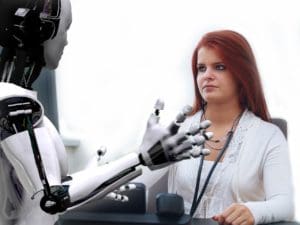As we move into an increasingly AI, machine learning and algorithm-powered world, it seems that the definite source of money and income in the future will be in conjunction with whatever we have the robots do. According to experts, we are constantly enhancing all manner of programs and algorithms to replicate what humans can do, which could open up possibilities for us to do other things. But perhaps we don’t quite realise exactly what AI and advanced programming are already doing for us. Let’s take a look.
Virtual Robots
We have several examples of algorithms and machine learning working for us already, as well as traditional programming. One of the major examples is in the gaming industry. Playing multiplayer battle royale games such as Fortnite might include playing against other people, but there is an element of interacting with the environment, which are all programmed NPCs.
In fact, games as old as 2001’s Black & White and the virtual pet Tamagotchi have experimented with AI to adjust the behaviour of non-playable characters. Pokemon Go remains popular for smartphones and uses complex programs in order for your smartphone to know what to do when it encounters various aspects of your direct environment. As MagicalVegas’s great collection of casino and slot games shows, each one is programmed to give a set of results for each game that reflect fairness for players, all conducted through a program with a feedback loop.
Anything that is coded to use cues and pre-programmed information to perform tasks is an example of machine learning, which forms the basis of AI and the robotics we imagine of the future. Chatbots, for instance, help free up customer service personnel to deal with concerns that don’t just require a quick fix based on pre-set information, keywords and patterns. Many of the things we do online and on our phones are based on the coding that uses pre-set algorithms and programs that are coded to respond in certain ways to certain stimuli.
Physical AI
Most people think of robots and what they can do for us. But, while the Channel 4 show Humans may have given us a bit of a false representation of what exactly AI would be in the near future, examples such as the Ocado factory powered by robots shows what they are doing here and now.
The factory was powered by smart robots, which helped pack bags and worked alone in the factory, programmed not to bang into one another and find the best route around the factory. Much like driverless cars, which appear to be receiving bad press through some of the accidents, the Ocado factory wasn’t equipped for the fire that decimated much of the stock.
The cautionary tale isn’t against robots, but it’s equipping robots with a human-like sense of danger, such as smoke detectors. Stronger machine learning may swoop in to fix this issue and be able to report back its findings in order to improve. Indeed, many robots perform tasks – and have done for decades – which has enabled us to work in areas that the machines couldn’t possibly, such as creative industries.
When used correctly, robots could lighten the workload of many people and overseen correctly could open up job opportunity for people to do other things. Not necessarily stealing human jobs, robots and new tech are expected to free time and energy to enable people to work in other sectors and develop ideas to better everyone, rather than perform jobs that robots could do. Sources of income in the future won’t be jeopardised by robots, but will work in tandem with it.

